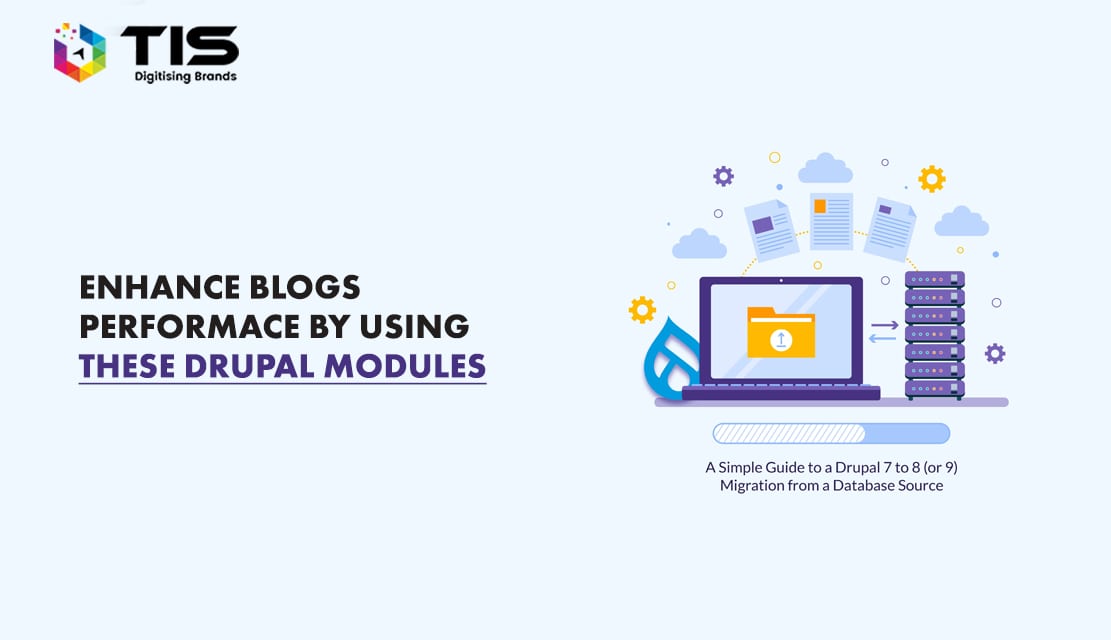
It’s no more a hush-hush that engaging blogs offer various advantages to businesses including brand recognition, enhanced traffic, better conversions, and improved leads. However, there are various lesser-recognized factors that unswervingly influence the effectiveness blogs have on visitors’ decision to engage with your brand, bookmark your site, and share your content.
So, what makes a blog creative and engaging? Apart from creating notable and high-quality content for the users, it is also essential to provide them with interactive tools and navigation so that they can engage with your website conveniently. There are many things to learn when you are going to start your next project with Drupal. The use of Drupal for creating engaging blogs is an entirely new learning experience and one of the biggest things is to enhance the core functionality of Drupal with modules contributed by its community.
There are so many modules available that it becomes difficult to pick up the best ones, however, I have selected a few standard Drupal modules from the vast list that you can use in your next project for creating engaging blogs.
Pathauto module doesn’t come with Drupal core but it is an essential module that helps in organizing content on your Drupal site. This module generates URL/path aliases for different types of content automatically. It means that you don’t have to mention the path alias and it also permits you to have URL aliases rely on a “pattern” system, which uses tokens that could be modified by you. Hence, the tokens become an indispensable need for the Pathauto module.
The most frequently used tabs in Pathauto modules are:
The View Module is another popular module of Drupal that allows website developers to sort and display the type of content, date, subject, author, etc. It offers you a great tool for generating custom mash-ups of content, and creating dynamic grids, lists, reports, tablets, navigation, and RSS feeds. You can also use it for pulling out information from your website and Views can be configured for displaying various results based on the interactions made by visitors. With this module, you can modify the views of your blog so that you can generate page layouts of your own choice.
You need the Views module if:
Besides, you can also use the Views module if you want a monthly archive same as the typical Movable-type/WordPress archives, which shows the link in the format, “Month, YYYY(X)” where X represents the number of posts in a given month.
A powerful core module, the Taxonomy comes integrated with Drupal as its important feature. It allows the developers to create vocabularies and within these vocabularies, you can specify terms. After this, you can easily “tag” your content by those terms. It provides your website with a list of organizational keywords including Meta tags, Meta descriptions, and categories. It allows you to relate to and classify your site’s content.
Use of Taxonomy Module:
This module works on specific algorithms that help in searching the related content or articles for the readers. It offers a list of links to website content connected to the existing node being viewed. This module uses MySQL’s FULLTEXT indexing and it itself integrates the important tables to the database for searching content connections.
FULLTEXT is a query, which is used by this module for finding related content in other nodes through a natural language search that construes the search string as a human language’s phrase.
Radioactive Module also known as “Radioactivity” is a “hotness” metric of content that checks the popularity of content. This module helps in combining the content with views of blocks for the recognition of content and hence, it acts as a popularity checking tool for the content.
Drupal community offers various modules for helping readers engage with your website content. Most of these modules assist users to share and comment on your content which is essential for creating maximum engagement on your content.
Commenting is often considered a great way of creating user engagement over a given topic since it allows the readers to share their views and feedback conveniently on related posts. Drupal comes with a comment module as its core feature, but you can use the Disqus module that integrates easily with your website and allows users to log in through their Google, Twitter, and Facebook accounts apart from their own accounts.
You can find this module on many websites and more specifically on non-Drupal sites.
Social Media Modules allow the readers to share your blog posts on their social media accounts, which is possibly the most excellent way of promoting your content on these social platforms.
You can easily integrate your blog with this module to different social media accounts like Facebook, and Twitter. It offers a centralized way of handling social media information and plugin widgets like Share and Follow buttons. You can use this module as your one-stop social media tool for reaching your target audiences.
It is very important that you create good content which is engaging enough for your customers in order to enhance your conversions and ultimately lead to success. If you know the right words to express your thoughts and views through a blog which is exhilarating for your readers and creates a sense of anticipation among them, then you just need the right tools for the forthcoming success.
Drupal is a blogging tool that provides a strong and impactful blogging experience with user-friendly content management and modules. As a Drupal developer or blogger, you can efficiently use these modules for generating engaging blogs for your business. It will not only improve the viewership, but it will also help in branding your business on a wider scale. However, if your mind still has some more modules in its store to share with us, please write them down in the comment section given below!